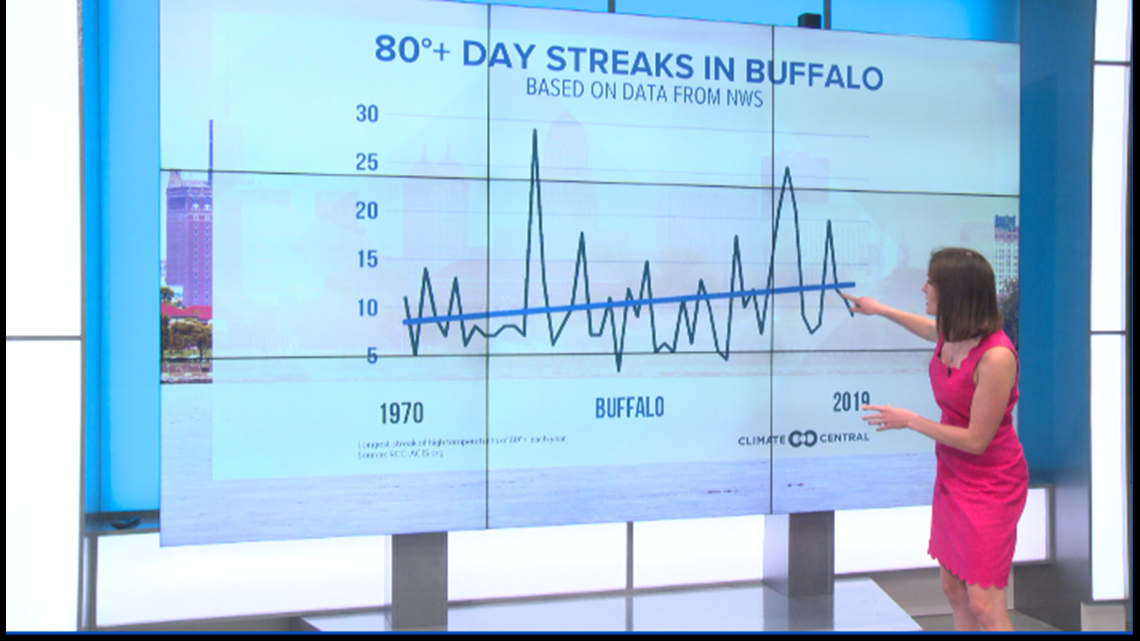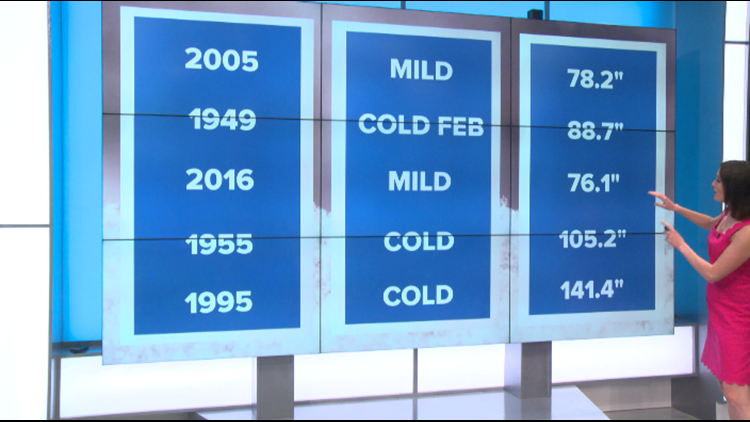BUFFALO, N.Y. — You could make an argument that summer 2020 has both flown by and seemed to go on forever. But there is no arguing that it was a hot one.
As of Monday, the last day of meteorological summer, the average temperature for the season was 72.8 degrees, locking in the number two spot on the list of Buffalo’s hottest meteorological summers since 1940. The hottest summer on record during that time was 2005.
Several temperature records were set along the way. July 2020 is now Buffalo’s hottest month on record. The month started with Buffalo’s longest heat wave; 8 days in a row with a high of at least 90 degrees. One of those days is now Buffalo’s second-hottest day one record with a high of 98.
RELATED: Buffalo's hottest month on record
August 2020 made the top 10 list, coming in as the fifth warmest August on record.
Between June 1 and August 31, the definition of meteorological summer, just 20 afternoons had a high temperature below the daily normal and 35 of those days reached at least 85 degrees. Only 16 nights had low temperatures drop below normal.
This summer’s warmth is part of a trend being traced by climate science communication group Climate Central. One of their most recent publications shows that Buffalo is experiencing longer stretches of days with highs in the upper 80s.


But the big question that I’ve gotten after all of this heat is “what does that mean for the winter?” For better or worse, the answer is “not much.” It is impossible to connect one variable like a hot summer to either a mild winter or a severe winter when there are so many other factors to consider. I explained some of them in this week’s episode and showed how winters immediately following Buffalo’s five hottest summers fared.
New episodes of Heather’s Weather Whys are posted to the WGRZ YouTube channel every Wednesday evening.
If you have a weather question for Heather to answer, send it to her at heather.waldman@wgrz.com or connect with her on Facebook or Twitter.



